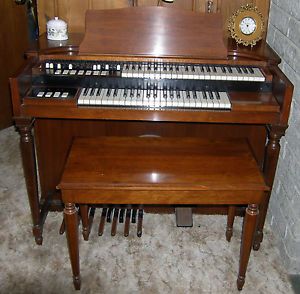Hammond Organ Serial Numbers

ID My Older Hammond. Some of the organs have the model and serial number plate located on the lower left or right hand corners of the organ. Under the Keyboard(s). ORGAN SERVICE COMPANY, INC. This page has been designed to help individuals find the model and serial number plate on the Hammond Organ instrument. ORGAN SERVICE COMPANY, INC. This page has been designed to help individuals find the model and serial number plate on the Hammond Organ instrument.
I have Hammond organs without any documentation. No serial number. At the back is a sign. Soundmec Mammond MIOI split by Maidstone. I think they are custom.
Serial Communication With Labview Tutorial Pdf. Aeolian Hammond BA player organ with Hammond tone cabinet (1938) The is an, invented by and John M. Hanert and first manufactured in 1935.
Various models were produced, which originally used to generate sound via, where component waveform ratios are mixed by sliding switches called and imitate the pipe organ's registers. Around 2 million Hammond organs have been manufactured, and it has been described as one of the most successful organs ever. The organ is commonly used with, and associated with, the. Contents • • • • • Tonewheel organs [ ] Tonewheel organs generate sound by mechanical toothed wheels, that rotate in front of electromagnetic pickups. Each tonewheel assembly creates tones with low harmonic content, close to a sine wave. Inside the coil is a permanent magnet.
As the teeth of the tonewheel pass by, the strength of the magnetism changes—when the tip of a tooth is closest to the tip of the magnet, the magnetism is strongest. As the magnetism varies, that induces an alternating current (AC) in the coil, which becomes one of the frequencies used in harmonic synthesis. Image Model Name / Number Years produced Description. Kpg 49d 4 20 Download Movies. X-66 1967–1973 12-tone tonewheel generator with frequency divider and various additional features X-77 1968–1973 A restyled H-100, designed to replace the B-3.
Had its own Leslie cabinet, the X-77L Two models in Church-styled cabinet were made under military specifications, and named G (G for 'Government contract', with chorus), and G-2 (with vibrato), to be installed in chapels and officer's messes of U.S. Army and Navy. Vacuum tube musical instruments [ ] Vacuum tube musical instruments mean generating sound with -based. Hammond Organ Company commercialized it in the late-1930s as (1939–1942) and Solovox (1940–1948).
Especially, new designs introduced on Novachord — and — were immediately followed by many manufacturers of and during the 1940s-1970s. However, Hammond Organ Company did not adopt these on main products until the late-1960s, except for S series (1950–1966) and 'Solo Pedal Unit' on RT series and D-100 (1949–1969). Image Model Name / Number Years produced Description. Solovox (model J,K,L) 1940–1950 Monophonic attachment keyboard instrument, intended to accompany the pianos with lead voice of organ and orchestral sound. It consists of two units — a 3-octave mini keyboard attaching under the piano keyboard, and a tone cabinet including electronic sound generator, amplifier and loudspeaker. The sound generator is based on a vacuum tube oscillator and octave divider circuits originally designed for Novachord. There are three minor changed models: • Model J (1940–1946) • Model K (1946–1948) • Model L (1948–1950).